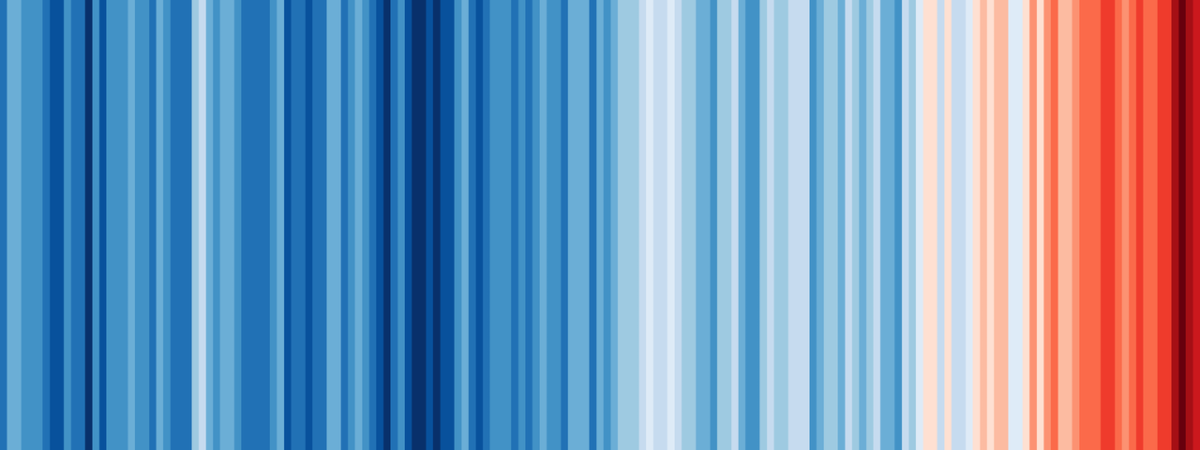Ecocentricity Blog: Show Your Climate Stripes
By: John A. Lanier

Ecocentricity Blog: Show Your Climate Stripes
I’ve got some ideas for last minute holiday gifts if you need them, courtesy of everyone’s favorite crafting site - Etsy! With the cold weather upon us, maybe your loved one needs a cozy scarf. Or if the chill is at the other end of their body, then a pair of socks is always nice! For some warmth on the inside, a new coffee mug might hit the spot. And with a global pandemic still raging, a stylish facemask would certainly be put to good use.
If you clicked those links, you’ll see there’s a theme to my gift ideas. It turns out that lots of useful things come in stripes...climate stripes, that is. About three and a half years ago, Dr. Ed Hawkins, a climate scientist at the University of Reading in England, created this graphic that went viral (at least in environmental circles). These stripes came to be called “warming stripes” or “climate stripes,” and they are a visual representation of the global warming that scientists have documented for years.
The visualization is essentially “painting by numbers,” where the numbers are the average annual temperature for the planet, with each year represented by a vertical stripe. Blue represents colder temperatures for that year, and red represents warmer. The stripes are read from left to right, and they clearly show that over the past 170 years, the Earth has warmed.
To be clear, there is nothing groundbreaking about the science behind this graphic. Dr. Hawkins was using the exact same data that scientists have been creating and citing for decades. We’ve known for a long time that global warming is real, and that human activity is the primary cause. In that respect, the climate stripes are the same old, same old.
What WAS new, however, was Dr. Hawkins’ refreshing take on the data. By design, the graphic lets us see global warming data in the simplest form possible. For some reason, the human brain is drawn more to color gradation than numerical tables or bar charts, so this graphic appeals to the average person much better than other forms of visualization. It isn’t so much “dumbed down” as it is purified - it communicates the most important thing that we need to know.
Far too often, science communication doesn’t do that. Whether the field is material science or astrophysics, particle physics or biomedical engineering, scientists frequently struggle to explain their work. Admittedly, they are really good at explaining the “what” and “how” of their field, which requires a degree of baseline knowledge to understand. That’s why academic journals exist - they allow scientists to communicate to other scientists. But scientists tend to be bad at explaining the “why” of their work to the general public. And when you really need the public to pay attention to a particular scientific field, that’s the part that matters most.
We really need the general public to pay attention to climate change, so this is an excellent graphic to start conversations. Seriously, consider getting an article of clothing in the climate stripes! You may be surprised how many people ask you what it means. And that’s a good thing.If you want to dig in further to the climate stripes, here’s the website that Dr. Hawkins created. You can even specify certain geographies to get region-specific stripes. It’s a great tool, whether you want to start meaningful climate conversations, learn a thing or two, or round out your holiday shopping!
This blog is available weekly via email subscription. Click here to subscribe.
Ecocentricity Blog: Energy Burdens

